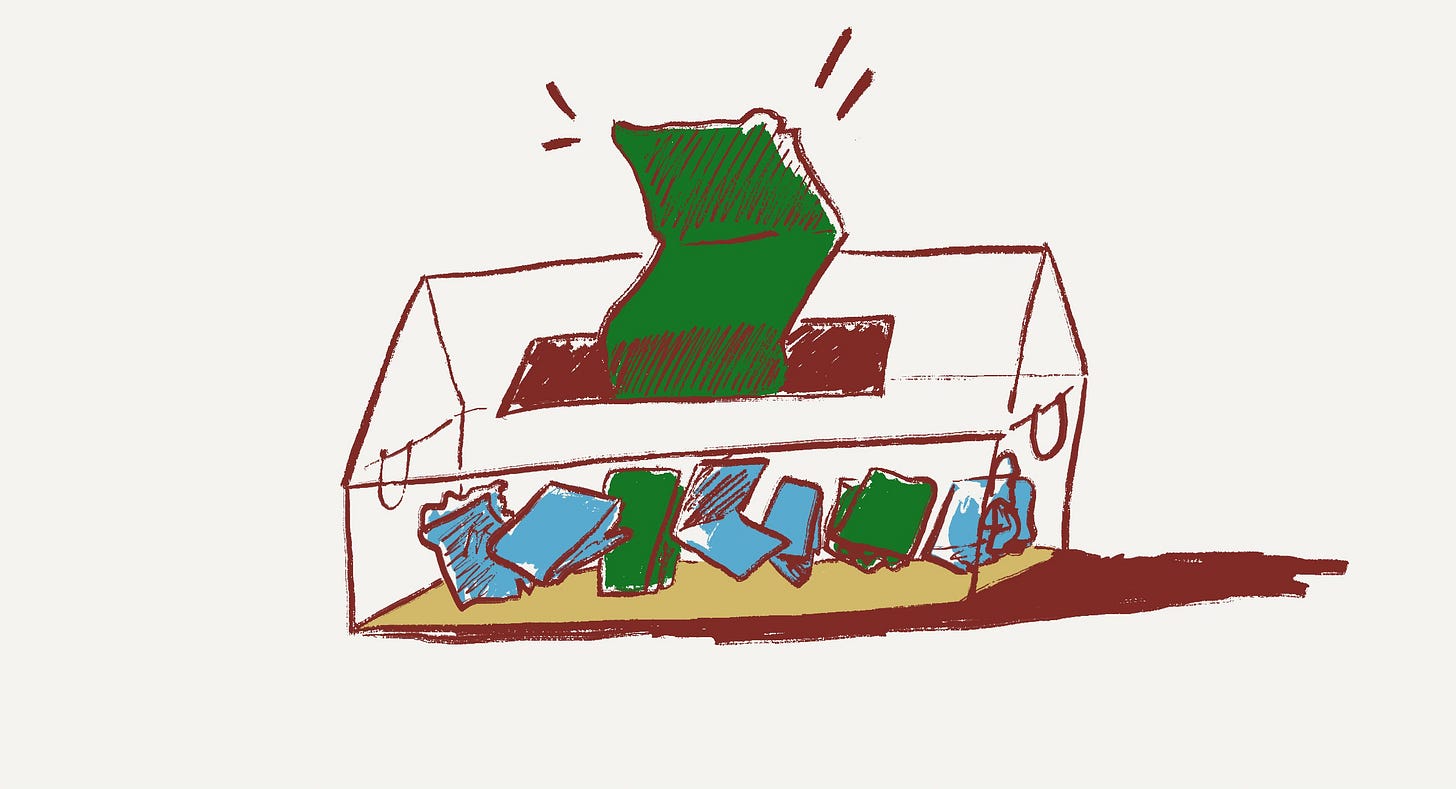Q&A — Applying creativity functionally
Your Ideas, Examined
YOUR IDEAS, EXAMINED are your direct line for inquiry. A Q&A series where your questions are explored as case studies, stress-tested through cultural and strategic lenses to reveal sharper ways of seeing.
Welcome to your first instalment of YOUR IDEAS, EXAMINED, a Q&A series by Ideas Economy whereby we can investigate together all things business, creativity, and culture.
Today’s selection of questions investigates creativity. Not so much how to be more creative (although, tell me if that piques your interest). Rather, we’re looking today at how to apply creativity functionally. Consider creative power like we would any form of capital; that it can absolutely be something that we allocate, multiply, and manage strategically.
Let’s begin.
For future Q&As, share your questions anonymously with me here.
Q – What distinguishes creativity from innovation?
A – Where creativity is the emergence of something that hadn’t existed before — tangible, theoretical, abstract — innovation then is the successful application of it.
Q – What does a creative routine look like when your work is strategic, not artistic?
A – I’ve seen creativity reframed (rebranded, if you will) in consulting rooms as logic trees and other frameworks for problem solving. The intention remains. These are all different ways of pushing your mind to create new approaches to existing problems.
Q – How do you build repeatable, modular structures around creative thinking?
A – So misunderstood about creativity is that it is presupposed as this chaotic thing which cannot be tamed and shows up when it likes. (Although, sometimes, yes it is.) At large, this is not true. Your workflows can optimise for creativity:
Design your work environment to inspire imagination (beautiful interiors, books, art, comfortable furniture). Imagination is the seed before innovation.
Remove distractions by streamline any rigid processes. Keep it neat so you can afford mess where it counts.
Create at least one routine to clear mental space. Creativity needs a void before it arrives, and this is very hard to do if everyone in the team is chronically over their mental capacity.
Q – How do you know when an idea is valuable enough to develop?
A – From a market perspective, you often don’t until it actually goes to market. Value is a conversation, and you can use market feedback to iterate a raw idea into a refined offering. Above all, if something excites you in your gut, that intuition must be investigated further.
Q – How do you differentiate between true originality and well-packaged imitation?
A – Ideas that truly resonate with people are not those which exist in a vacuum. Part of your originality is really the accumulation of everything you have consumed. That is, all information, experiences, media, fashion, observations. They reference back to something that already exists which, for one reason or another, your mind and spirit has chosen to collect. Understand that your originality is merely an alchemy of all your influences and inferences rolled together. Consider the Gestalt Principle: the whole is other that the sum of its parts.
Q – How do you personally balance aesthetic instinct with strategic rationale?
A – Remember that aesthetics always serve a strategic function. Even when they do not. Humans are far more visually and somatically literate than they are through logic or rationale, meaning you communicate far more effectively through the senses — touch, taste, sight, smell, sound.
Got a question or idea worth examining? Share it and see that it might be chosen for an upcoming edition of YOUR IDEAS, EXAMINED.



